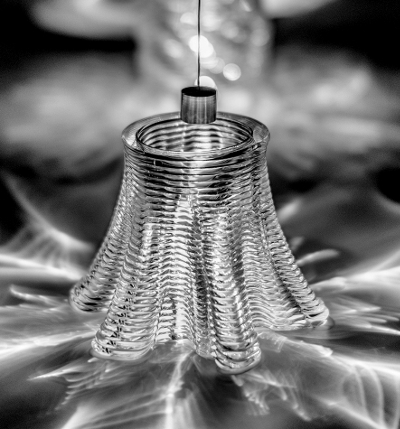Glass joins 3D-printing palette
 3D-printing has already changed the face of manufacturing, and a new development will only add to the range of the exciting technique.
3D-printing has already changed the face of manufacturing, and a new development will only add to the range of the exciting technique.
Researchers at MIT have found a way to 3D print using glass.
The new method, called 3DGP, works in a similar way to traditional plastic 3D-printing, but extrudes a stream of molten glass.
The glass material is squeezed through a nozzle to form objects layer-by-layer, modulating and varying the thickness of the print to achieve advanced structures and designs.
The printer consists of two heated chambers stacked on top of one another. The upper chamber is heated to over 1000 degrees C and works as a “kiln cartridge”, while the lower chamber heats and cools to anneal the structures.
The molten material is extruded through an alumina-zircon-silica nozzle.
The MIT team says it can perform “first of its kind optically transparent glass printing” for use in “numerous potential applications”.
“The tunability enabled by geometrical and optical variation driven by form, transparency and color variation can drive; limit or control light transmission, reflection and refraction, and therefore carries significant implications for all things glass,” MIT says.
See the printer in action in the video below.







 Print
Print